Social and affectionate with a calm demeanor, bunnies can make great family pets with the appropriate care.
Beth Woolbright, the interim executive director of the House Rabbit Society (HRS) highlighted their unique personalities, telling Newsweek: "Not every person has the temperament to live with a rabbit. Patience, curiosity, and a sense of humor go a long way."
With that being said, if you believe a rabbit is the perfect addition to your family, you may have some questions.
Here's what you need to know about a rabbit's lifespan, how long bunnies live and how to keep them happy.
How Old Is a Rabbit in Human Years?
Speaking to Newsweek, a spokesperson for the American Veterinary Medical Association (AVMA), Michael San Filippo, explained: "A lot depends on the individual rabbit, and probably the main thing to consider when doing these kinds of conversions [of rabbit years to human years] is when they reach sexual maturity," which can vary from 3.5 months to nine months depending on the size of the breed.
Below is a chart outlining the rough conversion of rabbit age to human age, as confirmed by the HRS' Woolbright:
| Rabbit age | Human age |
| 1 week | 1 year |
| 2 weeks | 2 years |
| 3 weeks | 4 years |
| 4 weeks | 6 years |
| 2 months | 8 years |
| 3 months | 10 years |
| 4 months | 12 years |
| 5 months | 14 years |
| 6 months | 16 years |
| 1 year | 21 years |
| 2 years | 27 years |
| 3 years | 33 years |
| 4 years | 39 years |
| 5 years | 45 years |
| 6 years | 51 years |
| 7 years | 57 years |
| 8 years | 63 years |
| 9 years | 69 years |
| 10 years | 75 years |
A Rabbit's Lifespan
Below is an outline of the behavior of rabbits at different life stages, according to the HRS' Woolbright and Amber Tadena, HRS Rabbit Center Shelter Director:
- Under 1 month: The baby stage when they're reliant on their mothers.
- 1-3 months: The toddler-child stage, when they need toys and supervised exercise.
- 4-6 months: The adolescent stage. Hormones come into play, they're able to reproduce, have lots of energy and opinions, becoming more independent, ready to be spayed or neutered.
- 6 months-1 year: The young adult stage, when they are forming their likes and dislikes.
- 1-5 years: The adult stage. They require yearly checks by a veterinarian and good amount of exercise. At five years, veterinarians consider rabbits to enter their senior years. However, most rabbits act younger than that at this age.
- 6-8 years: What the HRS considers "middle age" when rabbits may start to slow down.
- 8 years or more: The senior years. They may need weight maintenance (either up or down), special care (such as additional soft surfaces for possible arthritis) and possibly more frequent vet checks if they start slowing down.
The AVMA's San Filippo said it is important to make sure you have a veterinarian lined up before bringing a rabbit into your home. While most vets should be comfortable treating rabbits, it's best to double-check whether they will, as some may want to refer you to another doctor, San Filippo advised.
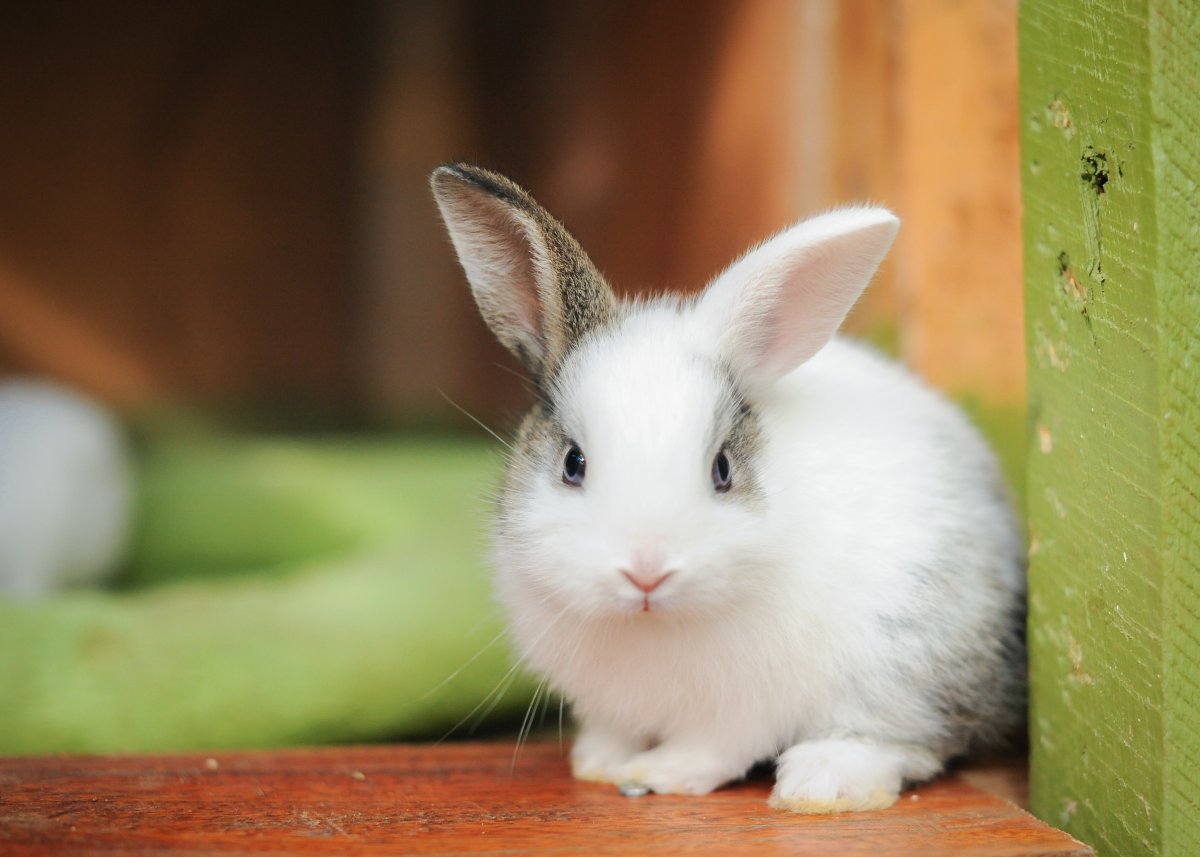
How Long Do Bunnies Live?
With a good diet and proper care, a rabbit's lifespan can range anywhere from five to 15 years when kept indoors, said the AVMA's San Filippo.
Ideally, bunnies should be handled and socialized from a young age so they can become comfortable with people. All female rabbits should be spayed by the time they are one year of age to prevent reproductive cancer, San Filippo advised.
Pam Runquist, the executive director of veterinary outreach for the Humane Society Veterinary Medical Association (HSVMA) told Newsweek rabbits that are kept "healthy and happy" can live for more than a decade.
The HRS' Woolbright said an old rabbit used to live around seven years but rabbits now live much longer lives. Their lifespan depends a lot on a good diet, the owner's level of education on rabbit care and the pet's genetics.
Having the rabbit spayed/neutered is also critical to their health, as it allows them to live with other bunnies, Woolbright stressed.
The experts recommend bunnies should be adopted rather than purchased from a pet shop, as "small animals are often raised in deplorable conditions when they're bred for pet stores to sell," according to the HSVMA's Runquist.
"If you're considering adding a rabbit to your family, please skip the pet store and consider adoption...contact your local rescue or shelter to see if you can give a loving home to a rabbit who needs one," Runquist advised.
San Filippo also said adoption or purchasing from a reputable breeder are great options for getting a pet rabbit. Since they are social animals, "adopting a bonded pair is ideal when possible," he added.
When it comes to selecting a pet rabbit, you'll want to be sure the animal appears bright, alert, and active. "A rabbit with a dull or rough hair coat or one that is too thin, pot-bellied, or sluggish may be ill," the AVMA spokesperson warned.
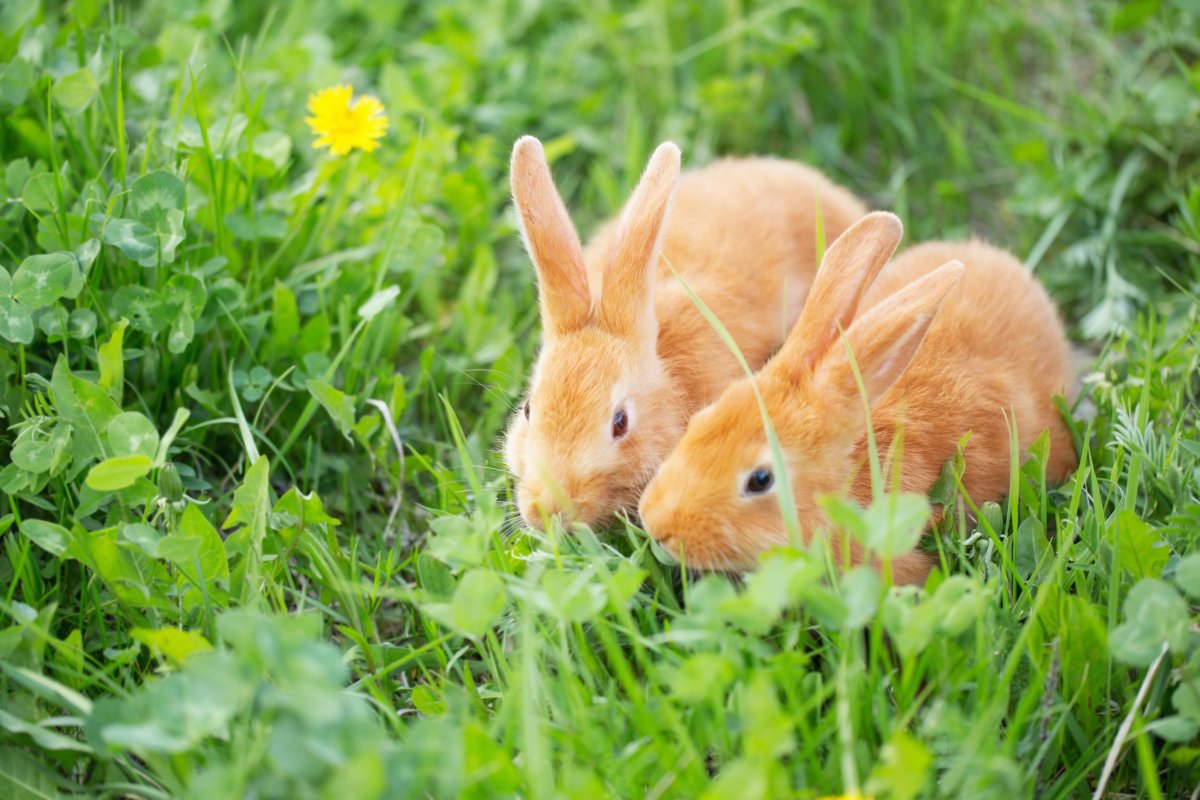
Rabbit Care Essentials
According to Woolbright: "The most important aspects of sharing one's home with a rabbit are to keep the bunny safe, tend to their mental and emotional needs and respect the rabbit for who they are."
Diet and nutrition
A proper diet is key for your rabbit's health and rabbit pellets alone are not enough to meet their nutritional needs, which vary with age.
While young growing rabbits require alfalfa-based pellets for their calcium needs, older rabbits should be given grass hay and pellets, such as timothy hay, he advised.
A daily source of fresh greens and "free choice high-quality grass hay for roughage," are essential, as is fresh water and daily exercise (more on this later) to keep your rabbit healthy, he said.
Bunnies require high fiber diets, so around 80 percent of their food intake should come from a variety of grass hays, so "ironically, frequently, when people think they are allergic to rabbits, it may actually be the hay variety," said the HRS' Woolbright.
Around 10 percent of their nutrition should be "bunny-safe fresh vegetables," with five percent being rabbit pellets and five percent or less being treats, such as a slice of carrot or banana, according to the HRS director.
Pellets are more of an "owner convenience," so there are many bunnies that live on a pellet-free diet, Woolbright explained.
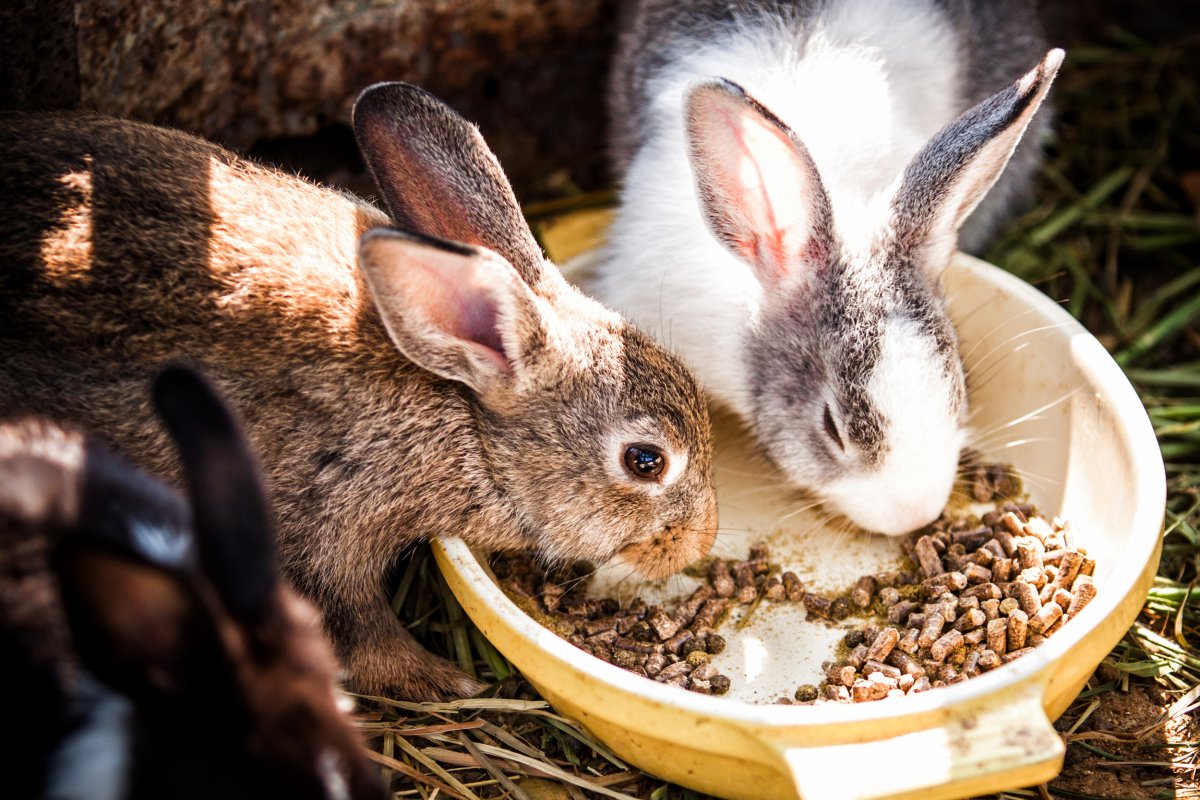
A Safe Indoor Environment
Pet rabbits thrive most in a comfortable environment within your home, and not in outdoor hutches or cages in a garage or basement, noted the HSVMA's Runquist.
While keeping a rabbit outdoors in a hutch may feel more "natural," it can be harmful as the rabbit is exposed to weather extremes as well as predators such as cats, dogs and foxes. "Even if a predator cannot get access to the rabbit, the rabbit could die from the stress of an attempted attack," the AVMA's San Filippo warned.
The HRS' Woolbright also said: "Life outdoors for a domestic rabbit is a time-bomb," the safest and most rewarding place for a bunny to live is within the house, as part of the family.
It's important to choose the right cage or hutch for your breed of rabbit, San Filippo said. "The cage should have enough room for the animal to move around freely. Avoid wire bottomed cages as this can lead to foot problems."
Most cages tend to be too small for rabbits, so the HRS recommends exercise pens, which may contain a cage where the door is never shut. These pens may also come with a litter box that contains the hay and where the bunny also relieves themselves, water and food bowls, boxes and tunnels for hiding and toys, the HRS' Woolbright said.
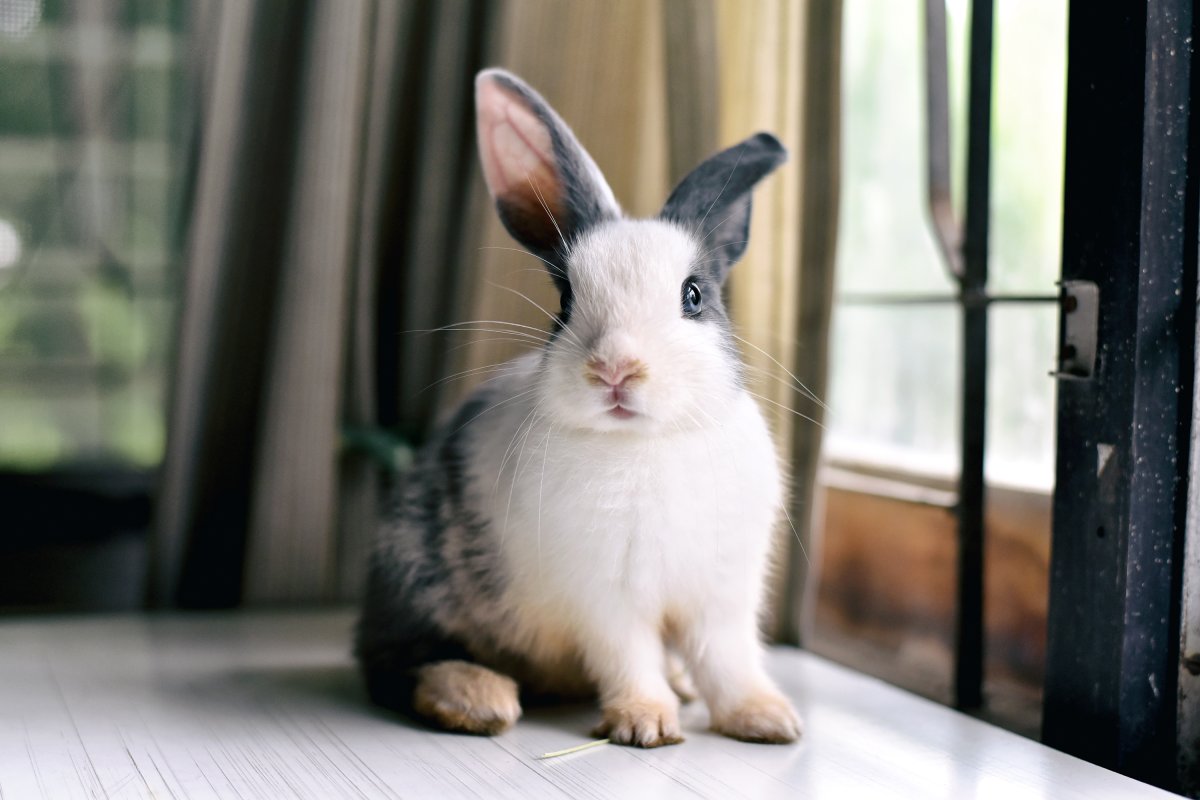
Exercise and Interaction
Bunnies require regular and gentle social interactions as well as at least an hour outside their enclosures each day to exercise, said the HSVMA's Runquist.
Your home will need to be "bunny-proofed," so that the pets remain safe if they are allowed to wander around the house outside their cage for a bit.
Owners need to ensure electrical cords, books and other temptations have been protected around the space where their pet rabbits are allowed to wander as bunnies can be active chewers, diggers or climbers or be couch potatoes too, the HRS' Woolbright explained.
San Filippo said you should also be mindful of small holes, large drops or other potential hazards around the house to ensure its "supervised time outside of the cage" remains safe.
Woolbright notes bunnies are much more interactive than their reputation and have their own individual likes and dislikes. Like three-year-old kids, rabbits need mental enrichment and appropriate interaction with humans.
Most bunnies prefer their affection on the floor, rather than being held in someone's arms, Woolbright explained. Both rabbits and children require supervision.
San Filippo said there are also many bunny safe toys available, including homemade ones, that can help ensure your bunny gets a sufficient amount of enrichment in their lives.
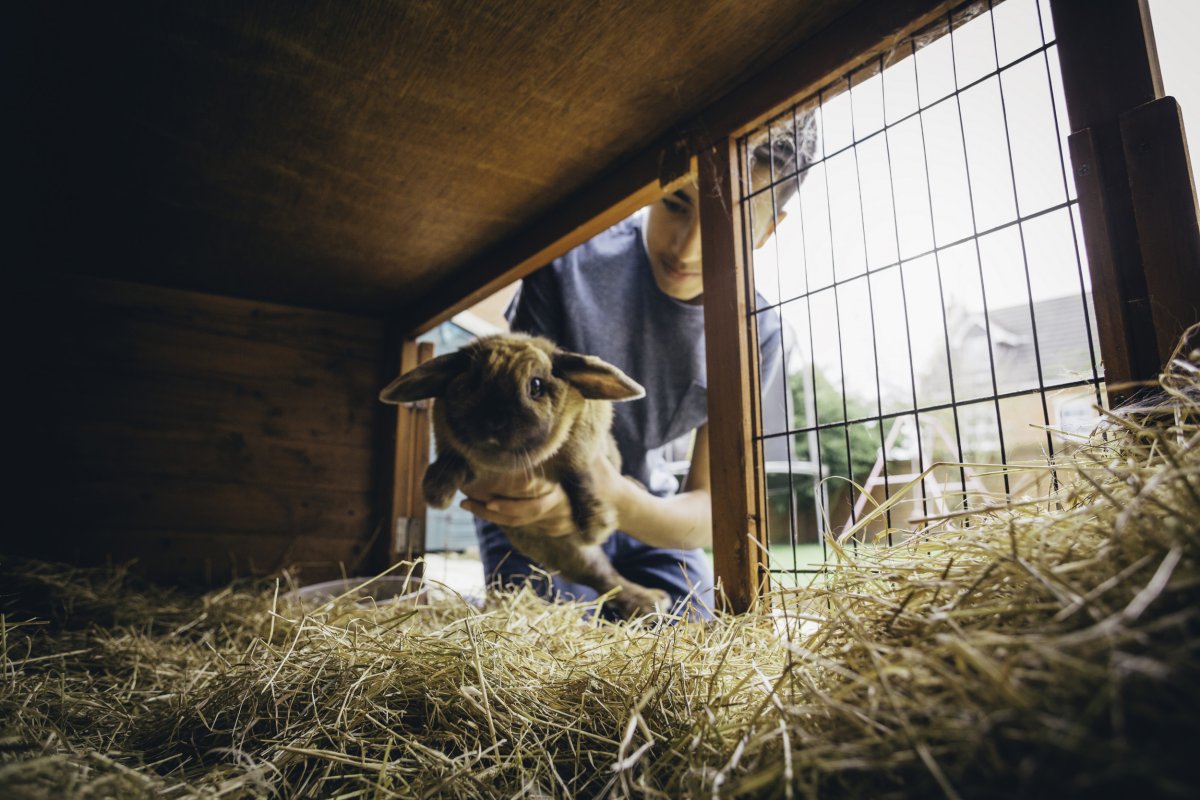
Uncommon Knowledge
Newsweek is committed to challenging conventional wisdom and finding connections in the search for common ground.
Newsweek is committed to challenging conventional wisdom and finding connections in the search for common ground.
About the writer
Soo Kim is a Newsweek reporter based in London, U.K. She covers various lifestyle stories, specializing in travel and health.
Soo ... Read more
To read how Newsweek uses AI as a newsroom tool, Click here.








